It’s the time of year for saving money!
In the last year of the Beatles existence, Paul McCartney was the prime driver pushing the band back to its roots of basic rock ‘n roll and core songwriting. He wanted the group to “get back,” to recapture some of their early magic, creating music that would be timeless which could ideally be performed live on stage anytime, anywhere. And Sir Paul has been getting back ever since the Beatles split up, touring regularly bringing the music to life for generations past the Fab Four’s 1960s timeline.
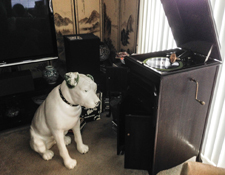 In the past few months I have been getting back myself (if you will) to a magical time of the early days of recorded music with the purchase of my very first Victrola: a hand-cranked, wind-up, completely acoustic, non-electric, self-contained music playback device. I have spent a good portion of this past Summer refinishing and restoring this amazing creation. Listening to it is akin to stepping into a magic time machine and for about four minutes a disc, you experience what it must have been like to hear pre-recorded music in the home at the turn of the 20th Century, a time when horses and buggies were still found on the streets and television was a futuristic dream of science fiction novelists.
In the past few months I have been getting back myself (if you will) to a magical time of the early days of recorded music with the purchase of my very first Victrola: a hand-cranked, wind-up, completely acoustic, non-electric, self-contained music playback device. I have spent a good portion of this past Summer refinishing and restoring this amazing creation. Listening to it is akin to stepping into a magic time machine and for about four minutes a disc, you experience what it must have been like to hear pre-recorded music in the home at the turn of the 20th Century, a time when horses and buggies were still found on the streets and television was a futuristic dream of science fiction novelists.
That said, I have long wanted a Victrola because of my fascination with music and also the way it gets reproduced for enjoyment at home.
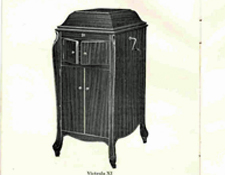 As a young child listening to my Chipmunk records on my very first little portable record player — a tube-driven thing with a weighty metal arm that was a hand me down from my brothers — I used to spend countless hours just watching the little steel-pin needle working its way through the grooves, imagining how it made sound.
As a young child listening to my Chipmunk records on my very first little portable record player — a tube-driven thing with a weighty metal arm that was a hand me down from my brothers — I used to spend countless hours just watching the little steel-pin needle working its way through the grooves, imagining how it made sound.
Was there a little man inside the phono cartridge or the speaker case or the tubes who made the sound happen?
I later learned how it works, of course. However that never appeased my fascination with the basic phenomena and concept of home playback of pre-recorded music.
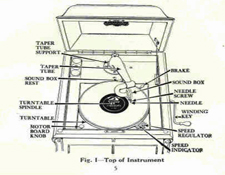 My Dad used to tell a story about when he came home from World War II and was visiting family and friends the old neighborhood he grew up in. He would tell them about the things he saw and learned there overseas. In particular there was an uncle (whom I never got to meet) who ran a corner candy store. One day, sitting on the stoop at the entry to the candy store, my Dad tried to explain to the Uncle the specifics of how airplanes worked – my dad had been in the Army Air Corps – to hopefully appease the uncle’s fascination as the then-still-a-new-phenonmenon of airplanes flew by overhead. So, after listening intently to my father’s explanation, the Uncle would look up to the sky and point to the passing plane and say with a not-smug shrug of the shoulders: “so…. how does it fly?”
My Dad used to tell a story about when he came home from World War II and was visiting family and friends the old neighborhood he grew up in. He would tell them about the things he saw and learned there overseas. In particular there was an uncle (whom I never got to meet) who ran a corner candy store. One day, sitting on the stoop at the entry to the candy store, my Dad tried to explain to the Uncle the specifics of how airplanes worked – my dad had been in the Army Air Corps – to hopefully appease the uncle’s fascination as the then-still-a-new-phenonmenon of airplanes flew by overhead. So, after listening intently to my father’s explanation, the Uncle would look up to the sky and point to the passing plane and say with a not-smug shrug of the shoulders: “so…. how does it fly?”
I feel exactly the same way about recorded music. You can explain it to me technically until you’re blue in the face and I will understand and comprehend. Yet no amount of scientific explanation can circumvent the underlying magic that enables us to hear music at home in the way we do with these systems.
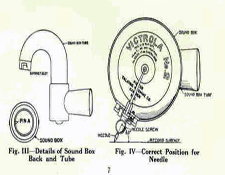 I mean, stop and think about it: A stylus wiggles and we get music! A digital file of ones and zeros are read by a computer processor and we get music! This is musical alchemy of the highest order which we often take for granted. Consider the magic found with in these funny little boxes that spin round pieces of vinyl or shellac — or a digital file of bits and bytes — and then turn it back into wonderful music which can make you dance or laugh or cry, well, that is pretty amazing.
I mean, stop and think about it: A stylus wiggles and we get music! A digital file of ones and zeros are read by a computer processor and we get music! This is musical alchemy of the highest order which we often take for granted. Consider the magic found with in these funny little boxes that spin round pieces of vinyl or shellac — or a digital file of bits and bytes — and then turn it back into wonderful music which can make you dance or laugh or cry, well, that is pretty amazing.
How does it work to stir such emotions we never knew we had?
So, like my distant great Uncle before me, fascinated by the airplane above and unwilling to fully grok how it all works technically, I say the same thing about my wonderful vintage 1920’s-era Victrola here: “so, how DOES it fly?”
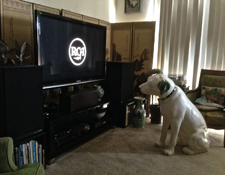 In these days of 7.1 surround sound and beyond – which many of you know that I absolutely adore – I also revel in the glory of being able to take and old dusty disc I have found at a thrift shop and be transported back 100 years or more to hear the sounds that our musical forefathers heard when all this was all shiny and brand-new and still very magical.
In these days of 7.1 surround sound and beyond – which many of you know that I absolutely adore – I also revel in the glory of being able to take and old dusty disc I have found at a thrift shop and be transported back 100 years or more to hear the sounds that our musical forefathers heard when all this was all shiny and brand-new and still very magical.
That magic is still there if you stop, look and listen.
Perhaps we all need to take a step back, and get back to our roots, to fully appreciate where we may be going in the future.
And maybe — just maybe — we all might better understand where we are going and better appreciate how recorded music can transport you to another place.
Mark Smotroff is a freelance writer and avid music collector who has worked for many years in marketing communications for the consumer electronics, pro audio and video games industries, serving clients including DTS, Sega, Sony, Sharp, AT&T and many others. www.smotroff.com Mark has written for EQ Magazine, Mix Magazine, Goldmine/DISCoveries Magazine, BigPictureBigSound.com, Sound+Vision Magazine and HomeTechTell.com. He is also a musician / composer whose songs have been used in TV shows such as Smallville and Men In Trees as well as films and documentaries. www.ingdom.com Mark is currently rolling out a new musical he’s written: www.dialthemusical.com.






